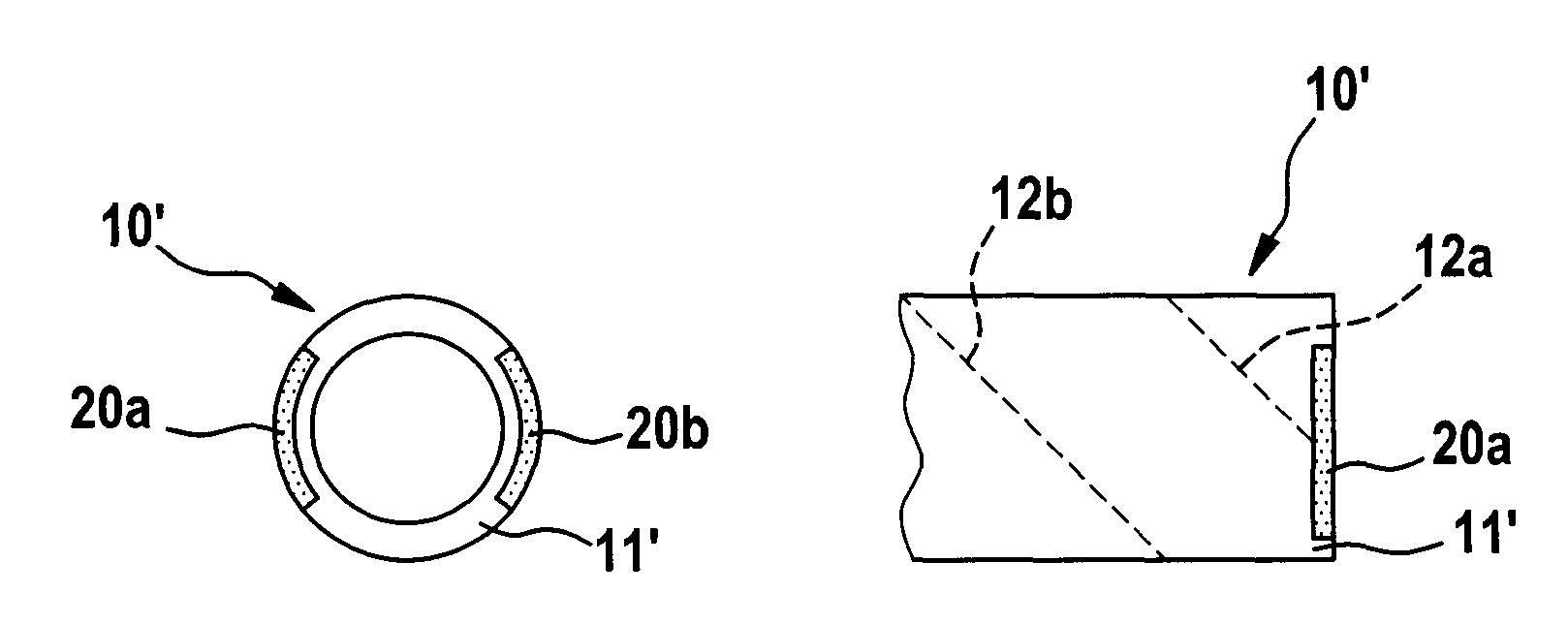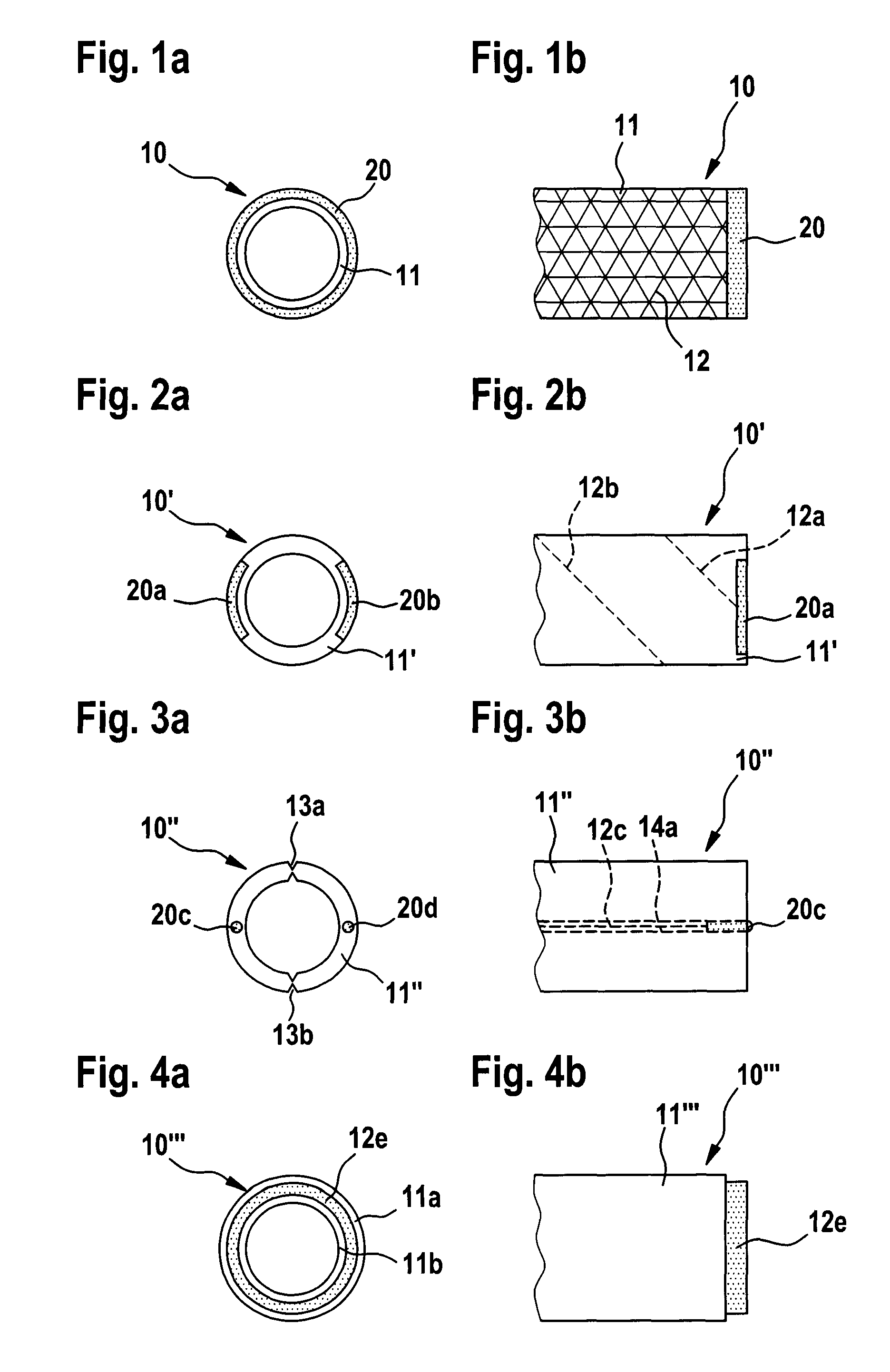Device for insertion of electrode lines or other medical instruments into a body
a technology for insertion devices and medical instruments, which is applied to external electrodes, sensors, catheters, etc., and can solve problems such as inability to simply remove them, inability to remove them by shifting the insertion device in the proximal direction, and inability to slit and/or tear open. not at all or only with great difficulty
- Summary
- Abstract
- Description
- Claims
- Application Information
AI Technical Summary
Benefits of technology
Problems solved by technology
Method used
Image
Examples
Embodiment Construction
[0025]FIGS. 1a and 1b show a schematic illustration of the distal end of a catheter 10, in which an electrode 20 made of conductive plastic is attached to the distal end of the lumen section 11.
[0026]The electrode 20 is connected to the metallic reinforcement braid 12, which is embedded in the lumen section 11. The reinforcement braid 12 is used, in addition to increasing the rigidity of the lumen section 11, as the electrical connection of the electrode 20 to the proximal area of the insertion catheter (not shown), on which a plug connector of arbitrary, known construction is situated. In the area in which the electrode 20 is seated, the external part of the lumen section is removed by abrasion, for example, so that the reinforcement braid 12 is exposed. The electrode 20 is attached to the distal end of the catheter in such a way that there is an electrical connection between braid and electrode. The electrical connection may be produced by melting a prefinished, annular electrode ...
PUM
| Property | Measurement | Unit |
|---|---|---|
| flexible | aaaaa | aaaaa |
| electrically conductive | aaaaa | aaaaa |
| circumference | aaaaa | aaaaa |
Abstract
Description
Claims
Application Information
 Login to View More
Login to View More - R&D
- Intellectual Property
- Life Sciences
- Materials
- Tech Scout
- Unparalleled Data Quality
- Higher Quality Content
- 60% Fewer Hallucinations
Browse by: Latest US Patents, China's latest patents, Technical Efficacy Thesaurus, Application Domain, Technology Topic, Popular Technical Reports.
© 2025 PatSnap. All rights reserved.Legal|Privacy policy|Modern Slavery Act Transparency Statement|Sitemap|About US| Contact US: help@patsnap.com


